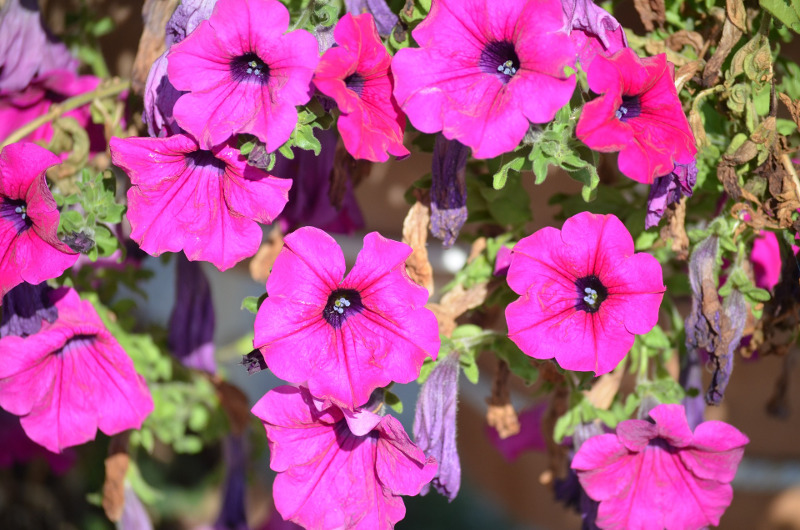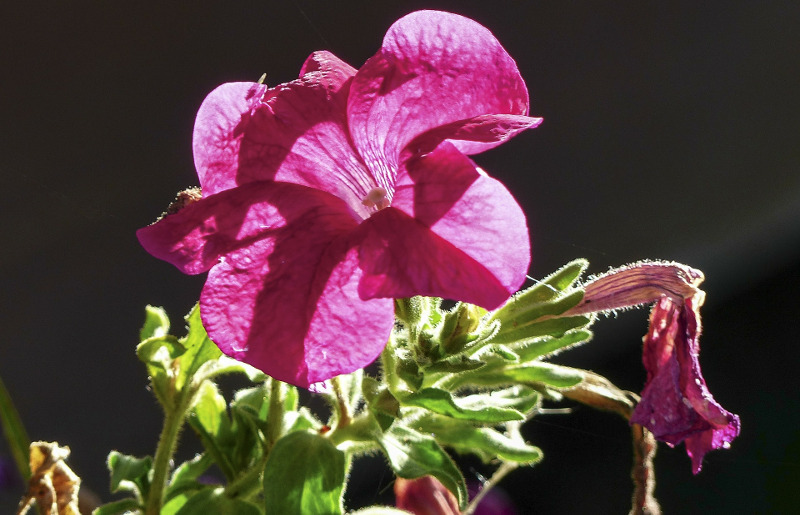Petunias bloom from spring through the fall and have bountiful flowers, making them a welcome addition to any outdoor space. These plants crave sunlight, and if you place them in a sunny spot, they will reward you with constant flowers.
Petunias are relatively easy plants to maintain, and if you’ve wondered, ‘do you cut back Petunias,’ then keep reading because the answer is yes. Find out why you should trim or prune Petunias and how this supports healthy and productive growth.

When to Prune Petunias
Petunias can be trimmed at any time during the growing season. Spent flowers can be removed, and any foliage or stems that have withered or turned brown can be pruned. Usually, the days are long by midsummer, so the plant is getting lots of light, and Petunias start to look leggy. Petunias naturally look leggy or have sparse stems.
New flowers emerge at the ends of stems, so as old blooms die back, the stems will look bare. Cutting a Petunia back in the middle of the season will allow the plant to push out new growth and appear more full. Dead or damaged growth can be removed at any time.

How to Prune Petunias
Step 1 - Inspect the plant to see if there is any wilted or damaged growth.
Look for spent flowers, withered foliage, or damaged stems. Observe if the plant is looking leggy or if there are bare sections of the stem where spent flowers fell off.
Step 2 - Trim off spent or damaged growth.
Older flowers can usually be removed with a gentle tug, and make sure to remove the entire flower and not just the petals. Dead or damaged sections of the stem can be removed using clean pruning shears. Trim just after the dead growth, so all damaged parts are removed.
Step 3 - Remove dead flowers.
Blooms that fall off naturally or deadheads should be cleared away. The petals may be stuck on the foliage and look unsightly, or they may fall to the soil where they can promote mold growth. Removing the deadheads will keep a neat appearance and improve air circulation, keeping the plant healthy.
Step 4 - Create a full-looking plant.
In midsummer, the plant will naturally look scraggly, and the stems will have empty spots where spent flowers fell off. Those sections of the stem can be cut back to at least 2 inches, and this will promote new growth and create a more full, lush, and perky appearance.
Maintaining Petunia plants throughout the growing season will keep the plant looking full-bodied and robust. Petunias will die back once the temperatures drop and the first frost hits, so in cold areas, the plant can be removed from the ground or planter at the end of the growing season. In growing zones 9 through 11, the plants will continue to grow into the winter. Keep up with removing damaged growth to promote new growth and help the plant thrive.
Why Prune Petunias
Petunia plants can easily become overgrown, so giving the plants a trim can maintain a tidy appearance, but regular pruning also encourages flowering and healthier branching. Removing spent flowers or deadheading prevents the plant from going to seed. Flower production will slow down once the plant switches over to seed mode. Removing older flowers encourages the plant to continue blooming.
Trimming back the stems will encourage new growth, and the plant will push out more stems which means more flowers. You can remove leggy sections, or instead of waiting for a plant to become straggly, preemptively trim back about ⅓ of the plant every couple of weeks. Routine pruning will ensure the plant does not look overgrown while encouraging consistent new growth all season long.

Petunias Pruning Tips
- Deadhead the plant to remove past prime flowers
- Use shears or clippers to remove dead or damaged sections
- Clear away spent flowers that naturally fell off
- Routinely trim back about ⅓ of the plant to promote new growth and create a full looking plant
 |
Author Alison Cotsonas - Published 12-16-2021 |
